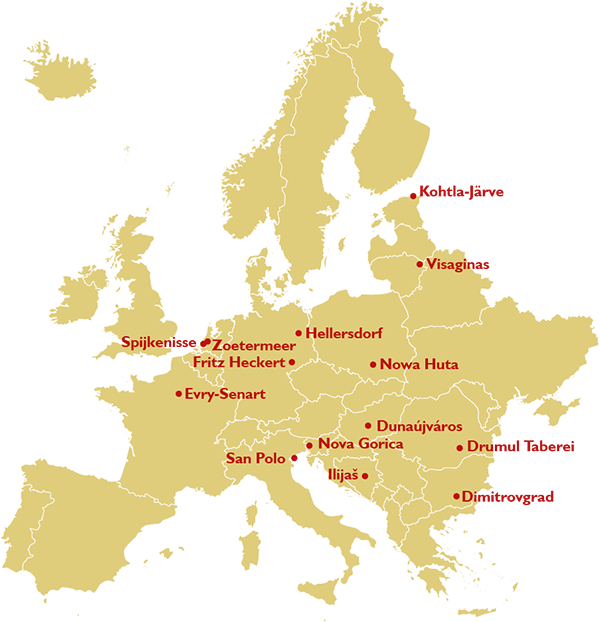Dunaújváros is situated in the heart of Hungary on the West side of the river Danube, about 70 kms south of Budapest. The town can be reached from Budapest via the M6 Freeway or the #6 Main Road, from Székesfehérvár via the #62 Main Road. At about 150 m above sea level the town is bordered by the Danube on the East for about 10 kms, and by some slight hills on the West. In the summer of 2007 a new bridge over the Danube was opened in the city. The area was inhabited at a very early age even in the prehistoric times. Objects were found from the prehistoric period and from the Bronze Age as well. A significant amount of findings were excavated from Roman times, when a Roman military camp named Intercisa and the connecting civil town played a significant/important role in the protection of the Roman Limes (borderline). The settling Huns and Magyars arrived in the area at the beginning of the 10th Century. Pentele – the base town was probably in existence in the Árpád-age being named after the middle-age Greek saint – St Pantaleon.
This small base town was overrun by the industrial town being erected in the middle of the 20th Century. In 1950, as the main development project in Hungary, the construction of the new city named Sztalinvaros (Stalingrad) began. The town and industrial complex originally designed for 40 000 residents was the result of the heavy industrialisation of the 1950’s, the typical showcase of Social-realistic construction style and the utopist imagination of the political regime of the time. It is by far the most significant memorial of Social-realistic architecture. As a result of the consolidation period following the 1956 revolution in Hungary the name of the town was changed to Dunaújváros. The name of the steelworks was changed from Stalin Ironworks to Dunai Vasmű, and later to Dunaferr Rt,. From 2023 it continued to operate under a new owner, Liberty Dunaújváros. The Ironworks is still the most important industrial company in Hungary and plays a significant role in making Dunaújváros the centre of the region. Dunaújváros is the largest planned city in Hungary. The construction of the city can be divided into three distinct periods: initially, from 1950, the model city of socialism produced modern, aesthetically outstanding, liveable buildings and public square. Then, with the population explosion of the 1970s, the city was expanded with one of the most densely populated prefabricated housing estates in Europe. After the change of regime, it was supplemented with a narrow area of detached houses, where better-off families settled, moving out of the city centre.
Representative Organisation:
Institute of Contemporary Art of Dunaujvaros





